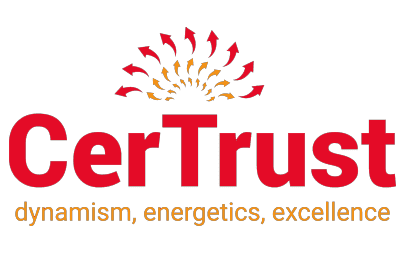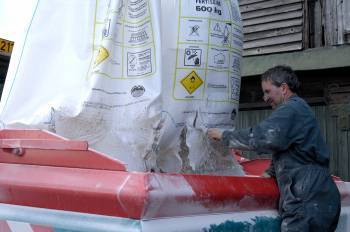In this summary, we look at the first part of the regulation that entails the obligations of manufacturers and distributors regarding fertilisers.
Fertilising products here refer to a substance, mixture, micro-organism, or any other material applied or intended to be applied on plants or their rhizosphere or on mushrooms or their mycosphere, or intended to constitute the rhizosphere or mycosphere. They can either be on their own or mixed with another material to provide the plants or mushrooms with nutrients or improve their nutrition efficiency.
The regulation does not prevent member states from maintaining or adopting provisions to protect human health and the environment which comply with the Treaties, provided that they do not require modification of EU fertilising products and do not influence the conditions for making them available on the market.
Before placing EU fertilising products on the market, manufacturers shall draw up the technical documentation and carry out the relevant conformity assessment procedure, or have it carried out.
Where compliance of a fertiliser has been demonstrated by a conformity assessment procedure, manufacturers shall draw up an EU declaration of conformity and affix the CE marking.
Obligations of manufacturers
Manufacturers shall keep the technical documentation and the EU declaration of conformity for 5 years after the product has been placed on the market. On request, manufacturers shall make a copy of the EU declaration of conformity available to other economic operators.
Manufacturers shall ensure that procedures are in place for EU fertilising products that are part of a series production to remain in conformity with the regulation. When deemed appropriate, they shall carry out sample testing of such EU fertilising products made available on the market, investigate, and, if necessary, keep a register of complaints, of non-conforming EU fertilising products and recalls, and shall keep distributors informed of any such monitoring.
They shall ensure that the packaging of fertilisers bears a type number, batch number, or other element allowing their identification, or that the required information is provided in a document accompanying each fertilising product.
They shall indicate their name, registered trade name or trade mark and their postal address on the packaging of the EU fertilising product or in an accompanying document. The postal address shall indicate a single point at which the manufacturer can be contacted.
Where an EU fertilising product is supplied in a package, the information shall appear on a label that is affixed to that package. Where the package is too small to contain all the information, it shall be provided in a separate leaflet accompanying that package. Such a leaflet shall be regarded as part of the label or where the EU fertilising product is supplied without packaging, all the information shall be provided in a leaflet.
The label and the leaflet shall be accessible for inspection purposes when the fertiliser is made available on the market. The information shall be in a language that can be easily understood by end-users.
Manufacturers who have reason to believe that an EU fertilising product that they have placed on the market is not in conformity with this Regulation shall immediately take corrective measures to bring that product into conformity, to withdraw or to recall it as appropriate.
Furthermore, where manufacturers have reason to believe that an EU fertilising product that they have placed on the market presents a risk to human, animal, or plant health, safety, or the environment. They shall immediately inform the competent national authorities of the member states in which they made the fertiliser available, giving details of any non-compliance and corrective measures taken.
Further to a request from a competent national authority, manufacturers shall provide it with all the information and documentation in paper or electronic form to demonstrate the conformity of the EU fertilising product with this Regulation, in a language that can be easily understood by that authority. They shall cooperate with that authority at request on any action taken to eliminate the risks posed by an EU fertilising product that they have placed on the market.
Obligations of importers
Importers shall place only compliant EU fertilising products on the market. Before this, they shall ensure that the appropriate conformity assessment procedure had been carried out by the manufacturer and that the manufacturer has drawn up the technical documentation and the required documents, and that the manufacturer has complied with the requirements.
Where an importer considers or has reason to believe that an EU fertilising product is not in conformity with this Regulation, the importer shall not place the EU fertilising product on the market until it has been brought into conformity. Furthermore, where the fertiliser presents a risk to human, animal, or plant health, safety, or the environment, the importer shall inform the manufacturer and the market surveillance authorities to that effect.
Importers shall indicate their registered trade name or trademark and the postal address at which they can be contacted on the packaging of the EU fertilising product or, where the fertiliser is supplied without packaging, in a document accompanying the EU fertilising product. The contact details shall be in a language easily understood by end-users and market surveillance authorities.
Importers shall ensure that EU fertilising products are accompanied by the information required. Where an EU fertilising product is supplied in a package, the information shall appear on a label that is affixed to that package. Where the package is too small to contain all the information, the information that cannot be provided on the label shall be provided in a separate leaflet accompanying that package. Such a leaflet shall be regarded as part of the label.
Where the EU fertilising product is supplied without packaging, all the information shall be provided in a leaflet. The label and the leaflet shall be accessible for inspection purposes when the fertiliser is made available on the market. The information shall be in a language that can be easily understood by end-users, as determined by the Member State concerned.
Importers shall ensure that, while an EU fertilising product is under their responsibility, its storage or transport conditions do not jeopardise its compliance with the requirements.
When deemed appropriate concerning the performance of, or the risks presented by an EU fertilising product, importers shall carry out sample testing of such EU fertilising products made available on the market, investigate, and, if necessary, keep a register of complaints, of non-conforming EU fertilising products and recalls of such EU fertilising products, and shall keep distributors informed of any such monitoring.
Importers who consider or have reason to believe that an EU fertilising product that they have placed on the market is not in conformity with this Regulation shall immediately take the corrective measures to bring that EU fertiliser into conformity, to withdraw it, or to recall it, as appropriate.
Furthermore, where importers have reason to believe that an EU fertilising product that they have placed on the market presents a risk to human, animal, or plant health, safety, or the environment, they shall immediately inform the competent national authorities of the member states in which they made the fertiliser available on the market, giving details, in particular, of any non-compliance and any corrective measures taken.
For 5 years after the fertiliser has been placed on the market, importers shall keep a copy of the EU declaration of conformity at the disposal of the market surveillance authorities and ensure that the technical documentation can be made available to those authorities upon request. On request, importers shall make a copy of the EU declaration of conformity available to other economic operators.
Further to a reasoned request from a competent national authority, importers shall provide it with all the information in paper or electronic form, necessary to demonstrate the conformity of the fertiliser in a language that can be easily understood by that authority. They shall cooperate with that authority at request on any action taken to eliminate the risks posed by an EU fertilising product that they have placed on the market.


